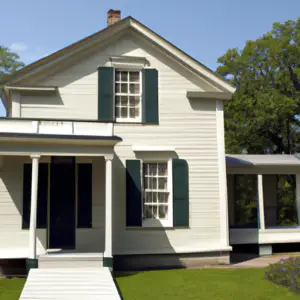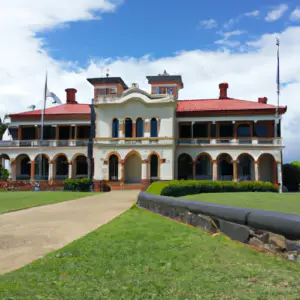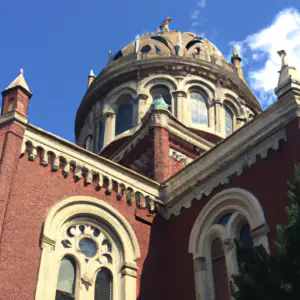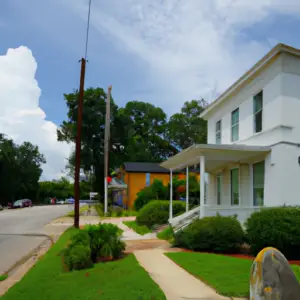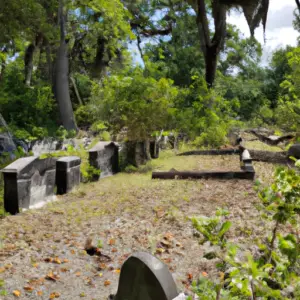10 Best Famous Monument in Augusta-Richmond County | Historical Building in Augusta-Richmond County

- By
- Aparna Patel
- |
- 12 May, 2023
- |
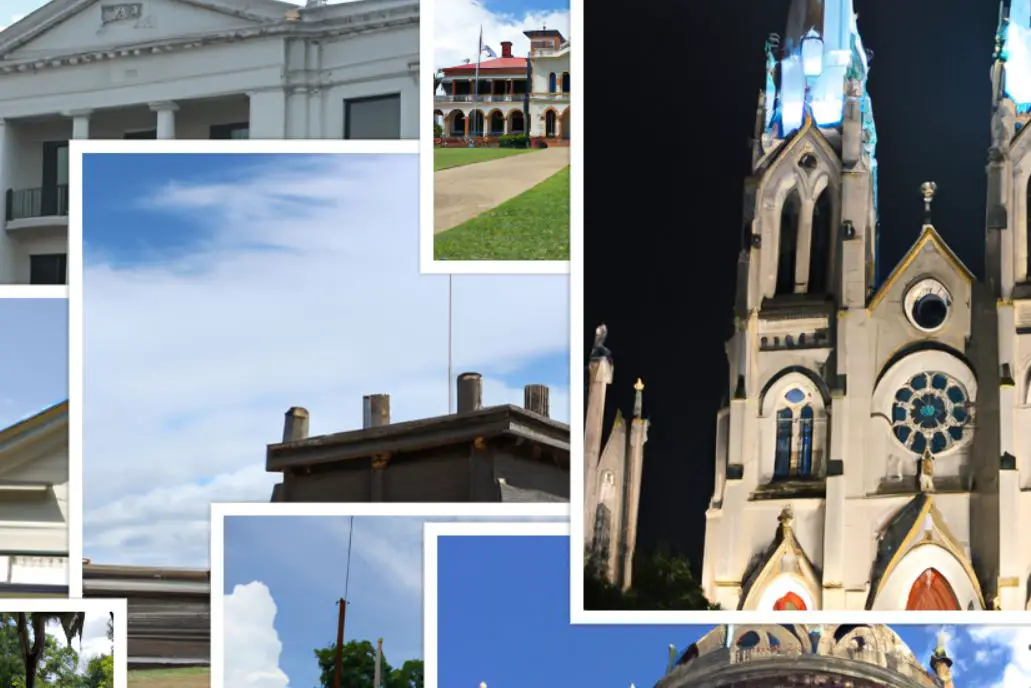
Augusta-Richmond County is home to many of the most famous and historical monuments in Georgia. From the Augusta Canal to the Imperial Theatre, the history and culture of Augusta-Richmond County is rich and varied.
In this blog post, we will take a look at some of the most iconic and noteworthy monuments in Augusta-Richmond County.
From ever-popular monuments like the August Canal to the lesser-known Imperial Theatre, this post will guide you through a journey through Augusta-Richmond County’s past and present.
We will discuss the history and cultural significance of each of these monuments, in addition to their present relevance and importance. Whether you are visiting Augusta-Richmond for the first time or you are native to the area, you will certainly find something fascinating about these monuments and historical sites. So, let’s take a closer look at Augusta-Richmond County’s best monuments and historical buildings.
10 Best Famous Monuments in Augusta-Richmond County ,GA
1. Augusta Common
Augusta Common is a historic public park located in Augusta-Richmond County, Georgia. Located on the corner of 7th and Reynolds Streets in the city’s downtown district, the park offers a wide variety of activities and attractions for all ages.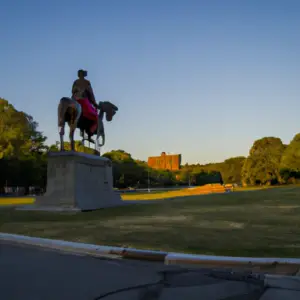
Built in 1821, the park has been home to numerous local sporting events, parades, concerts and festivals over the years. It is widely used by the community as a gathering place for festivals, political rallies, and family-oriented events. The park boasts one of the city’s most popular playgrounds, as well as numerous walking paths, a picnic pavilion and a large fountain. The area also features a large open green space and several sculptures, including several of historical characters such as James Oglethorpe, the park’s namesake.
The Augusta Common is also home to several memorials and monuments to the area’s military veterans and civil rights leaders, including the bronze Octagon Monument in the center of the park honoring Confederate veterans who lived and served in the area. The park is also home to the Augusta City Hall, as well as the historic EzekielHarris House.
The Augusta Common is a great place to enjoy the outdoors and experience a little of Augusta’s history. Whether you’re looking for a fun family day out or a getaway from the hustle and bustle of the city, the Augusta Common has something for everyone.
2. Augusta Canal Trail
The Augusta Canal Trail is a 6-mile urban greenway with a paved walking and biking trail that follows the Augusta Canal. Starting at the Augusta Canal Visitor Center in the historic district, the Cumberland Trail runs from the Savannah Rapids Pavilion to Adventure Crossing at the south end of the canal.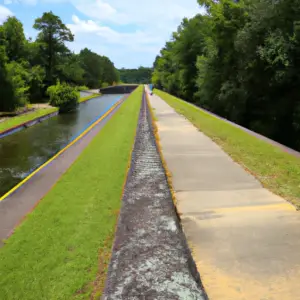
The Trail provides a great way to get out and get moving in Augusta-Richmond County, Georgia. The Trail has been partially completed and more miles are being added.
From the canal path, visitors can explore the National Historic Landmark District, its museums and amphitheater, take a boat tour of the canal, and connect to other South Augusta trails. The path is divided into three sections, North, Center and South, each with its own distinct character. The North section is the oldest part and runs along the restored section of the canal.
The Center section is known for its natural appearance and its connections to neighborhoods, recreational areas, and other trails. The South section is the newest section and runs along the new Augusta Canal Trail Trailhead. The Trailhead includes a playground, a picnic area, an interpretive sign, and an interpretive pavilion with public restrooms and other amenities.
3. Boyhood Home of President Woodrow Wilson
The Boyhood Home of President Woodrow Wilson is located in Augusta-Richmond County, Georgia. This home was where Wilson lived from 1860-1870. It is now a museum that is open for public tours and events.
It includes a library, study and kitchen which are open to the public. The home has been restored to its original appearance from the time of Wilson’s childhood.
It also contains photographs and artifacts from his time as President of the United States. The museum also offers a range of educational programs and lectures on the life of Woodrow Wilson.
4. Augusta Museum of History
The Augusta Museum of History is a museum located in Augusta-Richmond County, Georgia. It is one of the oldest museums in the state, having originally been established in 1937.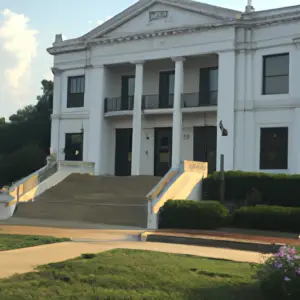
The museum focuses on the history of the community and features permanent exhibits on the history of Augusta, early Augusta settlers, the medical history of the area, Native American artifacts, and the cultural and political history of the city.
In addition to the permanent exhibits, there are also rotating exhibitions that feature artwork from national and international artists. The museum also provides educational lectures, activities and workshops for adults and children. The Augusta Museum of History also has a gift shop and a research library.
5. Old Government House
Old Government House in Augusta-Richmond County, GA was built in 1799 and is one of the oldest buildings in Augusta. The house was built by William Harris during the time when Augusta was a state capitol.
It served as the governor’s mansion and the Capitol Executive Building, as well as the county’s administrative center. The house underwent several renovations over the centuries and was most recently restored in 2000.
It is now open to the public as a museum, and visitors can tour the house and surrounding grounds. The house is listed on the National Register of Historic Places and is a part of the Augusta Canal National Landmark Historic District.
6. Sacred Heart Cultural Center
The Sacred Heart Cultural Center is located in historic Augusta-Richmond County, Georgia. It is the former home of the Sisters of Saint Joseph of Augusta and was built in 1897. The center is located on the corner of Greene and Telfair Streets and its Greek revival architecture makes it one of the most recognizable buildings in the city.
The Sacred Heart Cultural Center is a multifunctional event venue and center for community education, recreation, culture and religious service. The center hosts a variety of special events such as festivals, concerts, lectures, and receptions throughout the year. It also offers classes, workshops and other educational opportunities.
The Sacred Heart Cultural Center is open to the public and available for rentals for private events. There is a chapel on-site that is available for weddings, memorials and other religious services. For a full list of the center’s events and services, visit its website.
Read more
7. Graniteville Historic District
The Graniteville Historic District in Augusta-Richmond County, GA is located in the western part of Augusta, right along the banks of the Savannah River.
It is a 12.5-acre historic district listed on the National Register of Historic Places in 1975. The district includes many historic buildings, streets, and homes from the late 19th century and early 20th century. There are a few fine examples of 19th-century Italianate and Queen Anne residential architecture to be found. There are also several churches, a cotton mill, and a post office, all of which have played an important part in the history of the community. The district was named Graniteville because of its proximity to the granite quarries in the area.
8. Fort Western
Fort Western (or Fort of the West) is a historic fort built in 1771 to protect Augusta, Georgia and the Georgia frontier from the Creek and Cherokee Indians. Named after the first governor of Georgia, James (Wiley) Oglethorpe, the site encompasses both a reconstructed fort and an archaeological dig. The site is open to the public and serves as living museum dedicated to educating visitors on local history. The fort is located in Downtown Augusta-Richmond County and houses a variety of artifacts from that early era. It is considered one of the most significant colonial era ancestral sites in the United States.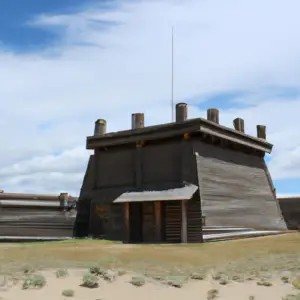
Fort Western was designed by the famous British military engineer Henry Yonge to be an impressive display of the citizens’ commitment to the defense of Britain’s colonies. It was originally constructed with earthwork fortifications, but later underwent several renovations that saw it equipped with wooden palisades when it was constructed.
Throughout history, Fort Western has served different purposes.
In 1779, it was used as a hospital during the Revolutionary War, and until 1809 it served as the county’s center of government. Later, it saw use as a cotton warehouse, a facility for gathering and drying tobacco, a mill, and a Masonic lodge. Fort Western was added to the NRHP in 1972 and is listed as a National Historic Landmark District. The fort, which is open to the public all year round, is one of the only surviving examples of an 18th century fortification. It has been completely reconstructed, and visitors can learn about the fort’s history through the museum and recreated rooms.
9. The Boyhood Gardens, Summerville Cemetery
The Boyhood Gardens of Summerville Cemetery, Augusta-Richmond County,GA is a 35-acre garden cemetery located within the city of Augusta, Georgia. The site encompasses around 25 acres of gardens, family plots and monuments. The cemetery was designed and constructed in 1887 to be a final resting place for Confederate soldiers and their families, with Boyhood Gardens providing a peaceful place of reflection and remembrance.
The cemetery contains over 400 graves, including those of Confederate veterans and their families and is one of the largest cemeteries in Georgia. The cemetery is listed on the National Register of Historic Places. The Boyhood Gardens feature a pond, walking paths, statues, bridges, a waterfall, monuments, a flagpole, and several floral and garden features. Visitors can also view the “Confederate Defenders Monument” on the grounds.
10. St. Paul’s Church
St. Paul’s Church in Augusta-Richmond County, Georgia, is one of the oldest churches in the state. Founded in 1750 as a Presbyterian Church, the congregation became Presbyterian-Episcopal in 1845. The present structure is the third building to house the congregation’s worship.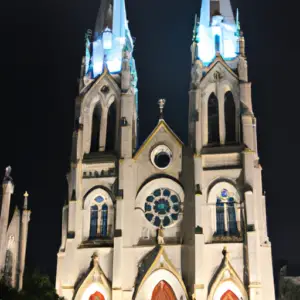
The plan for the present building was drawn in 1825 by William Strickland and construction was completed in 1830. Stunning architecture, both interior and exterior, coupled with a careful restoration to near-original condition, lasting from 1984 to 1988, makes this an excellent place to visit and an important landmark on the City of Augusta Men of Mark Trail.
Notable features of the church include its two beautiful stained glass windows, the portico adorned with Tuscan columns, an intricately carved wooden pulpit and a wooden altar cast by a slave employed by the builders.
Search Posts
Latest posts
-
5 Mar, 2024
Why prohibit engine braking?
Popular posts
-
5 Mar, 2024
Why prohibit engine braking?
-
5 Mar, 2024
How to avoid drinking vodka?
